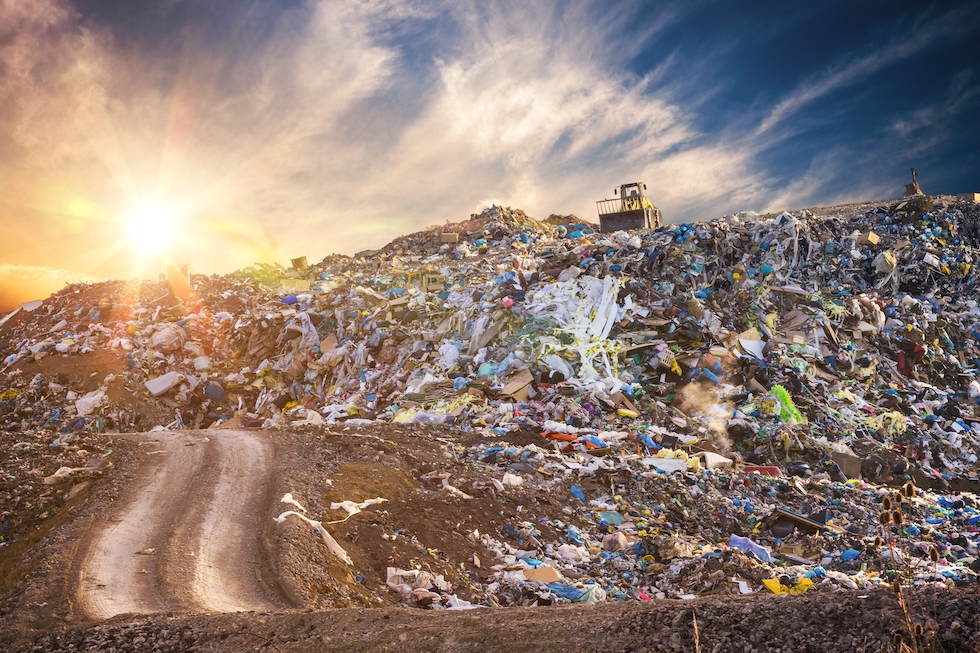Blog
The Resourceful City: Taking a Circular Approach to Resources
by SmartCity Team • September 7, 2022

NOTE: At the time this article was originally published, RUBICONSmartCity was not part of Routeware’s suite of technology solutions. RUBICONSmartCity was acquired by Routeware in August 2024 and has since been fully integrated into the company’s offering.
Just outside the picturesque capital city of Addis Ababa, Ethiopia, sits a steep mountain of trash. Surrounded on all sides by settlements tucked in among the verdant green of Ethiopia’s capital region, the mountain stands out. It towers over the nearby highway and homes. Its odor is overpowering, sometimes causing fainting spells at a nearby school. Parts of the mountain smoke ominously. Birds wheel overhead. This is the Koshe landfill, one of the main storage locations for the trash from Ethiopia’s largest city.
In 2017, disaster struck at Koshe. After years of trash piles rising higher and higher on the landfill, one of the towering walls of garbage collapsed. The resulting garbage slide buried a nearby settlement, killing 116 people.
There are thousands of landfills around the world just like Koshe. Some are informal and unmanaged, places where garbage piles up without oversight or safety practices, threatening the lives of those who live nearby or make a living on the landfill. Others are managed and graded, their toxic methane emissions captured, and then eventually closed, covered up, and turned into parks or solar farms. But all of them stand as stark reminders that the primary way that most of our cities deal with waste is the same method pioneered over 2,000 years ago by the ancient Romans—fill a plot of land with garbage until it’s full.
It is not just developing cities that struggle to manage their waste. Today, in Rome, the city that invented the modern practices of waste management, the landfill system has reached its breaking point. In 2009, the European Union declared that Rome’s main landfill, Malagrotta, could no longer accept waste. This decree ignited nearly a decade of furious efforts to find locations for the 1.7 million tonnes of waste that Rome produces every year. By 2018, the city was so desperate to find enough space to store its waste that the mayor appealed to surrounding cities to open their own landfills to Rome’s garbage.
As the Earth’s population continues its upward trajectory—the UN projects global population to reach 9 billion by 2050—the solution to how the Earth’s cities manage their waste is becoming even more pressing. The traditional model—the landfill—is environmentally and economically unfeasible in some cities, like Rome, and outright deadly in others, as in Addis Ababa. Future cities, cities that will succeed and thrive throughout the next 100 years or so, are developing new models for dealing with waste. These models are shifting cities away from a linear consumption model, in which goods are produced, consumed, and then buried in the ground. Future cities are moving to a circular model, which keeps resources in use as long as possible, minimizing waste and protecting natural resources.
Taking a Circular Approach to Resources
In 1979, Dutch politician Ad Lansink introduced into the Dutch parliament a framework for efficiently and productively managing waste. This framework, known as Lansink’s Ladder, eventually became the well-known waste hierarchy (“reduce, reuse, recycle”). The waste hierarchy has been adapted for use in various countries, but the principles are broadly similar: when dealing with waste, first attempt to minimize it, then reuse it, then recycle it, then capture its energy, and then, as the last option, put it into a landfill.
Circular economy principles supercharge the traditional waste hierarchy. A circular economy:
- Designs out waste and pollution
- Keeps products and materials in use
- Regenerates natural systems
Practitioners in different sectors apply these principles in creative ways. For future cities, adopting circular economy principles means actively structuring municipal operations and economic and social incentives to eliminate the inefficiencies that cause waste.
Future cities are adopting policies that don’t just minimize waste—they eliminate it. Cities are promoting initiatives that design reuse into materials from the beginning, allowing them to reuse some materials in a circular loop. Cities are overhauling recycling, turning an expensive and underfunded municipal service into a showcase of efficiency and new technology. These resourceful initiatives together are borne out of necessity—the linear model of waste management pioneered by the Romans is no longer fit for purpose for the twenty-first century. These initiatives will result in future cities that are more sustainable, resilient, and circular.
This is an excerpt from “The Resourceful City,” a chapter authored by Conor Riffle in The Climate City, edited by Martin Powell and published by Wiley-Blackwell.
For more information on RUBICONSmartCity™, a proprietary, cloud-based technology suite that helps municipal governments run faster, smarter, and more effective waste, recycling, and heavy-duty municipal fleet operations, Get Started today with your initial quick and free consultation.